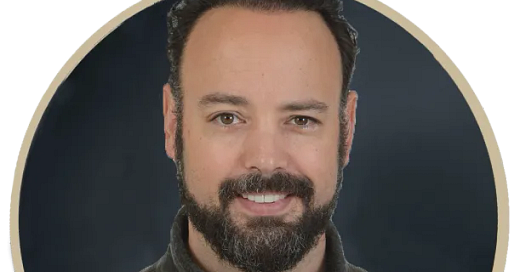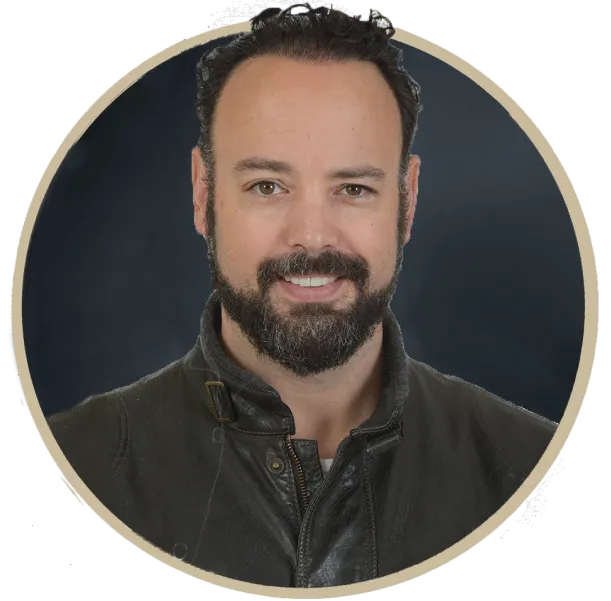Squaring the Circle: The Black Dot as Contemporary Chōra
A guest article by author of Plato ReImagined, Daniel Sanderson
This philosophical creative fiction re-examines Plato's Ring of Gyges through the lens of Timaeus' chōra - the formless receptacle of being. When an office worker encounters a topological anomaly in a photocopied document, we witness the collapse of Aristotelian substance-accident categories and the terrifying fluidity of moral frameworks in the absence of observation.
Sanderson's allegory interrogates:
The ontological status of justice in post-panopticon society
The void as both metaphysical ground and existential threat
Modern workplaces as neo-Platonic caves
A rigorous yet unsettling contribution to materialist philosophy.
The copier whirred, clicking with an almost organic hesitation before it spat out the paper. A standard letter-sized sheet—11 by 8.5 inches—crisp, unblemished, save for the massive black dot in the center. The dot was nearly as large as it could be while still maintaining its status as a dot rather than an outright field of darkness. A perfect circle, inked with such precision that it absorbed light differently, like something that did not merely rest on the page but existed through it.
The office worker—who was average in every conceivable way, from his off-white dress shirt to his eternally mid-tier coffee—tilted his head, perplexed. He glanced at the paper tray. The other pages were standard copies of standard memos for a standard workday. This, however, was something else. He held it up to the fluorescent light, but it remained the same. Opaque. Abyssal.
His first instinct, being the product of an education system designed to obliterate genuine thought, was to dismiss it as a printer error. He placed the paper down, but something strange happened—the paper remained in place, but the dot did not. Or rather, it remained in place in a way that was different from the paper itself.
It became the defining characteristic of the paper.
He exhaled, swigging back the remainder of his burnt coffee, the acrid tang mixing with the stale air of the break room. Then, instinctively, he waved a hand over the dot. The sound around him dimmed slightly, as if reality were buffering. His fingers tingled. A sense of vertigo, though he was standing still. And then, in one fluid motion—one that would later feel less like an action and more like an inevitability—he pressed his palm against the black hole.
And his hand went through.
Not through in the sense of pressing against an image, nor through in the sense of pushing into an unseen layer. It was simply gone.
With a yelp, he jerked it back. His hand was intact. The same lifeless fingers that spent most of their days typing uninspired emails. But now, he held something no one else on Earth had. The implications twisted in his gut, ancient and familiar—something like the Ring of Gyges.
Ah, the Ring of Gyges. The artifact that revealed that justice is merely the result of external constraints, that we are good only because we must be. Strip away the fear of consequence, of judgment, and see what remains.
His grip tightened around the page.
With renewed calculation, he moved to the vending machine. A simple test.
The black hole adhered perfectly to the glass front. He reached through. His fingers passed through the threshold, brushing against aluminum and plastic. He gripped. Pulled.
And there it was—his favorite chocolate bar, pilfered without even triggering the machine’s LED screen.
The laugh that escaped him was not his own. Or rather, it was, but it was a version of himself that had been waiting, dormant, restrained by the fragile scaffolding of morality that now collapsed under the weight of opportunity.
If one could take without cost, why wouldn’t they?
His pulse quickened.
The security office was next.
There, behind layers of corporate indifference and mediocre surveillance, lay the safe. A mere formality. A brittle fiction. He pressed the black hole onto its heavy steel door.
His fingers trembled as he reached in, feeling the cold brush of stacks of bills. He pulled them out in fistfuls. The sheer absurdity of it—the ease!—sent his heart into overdrive.
More.
Deeper.
He stretched his arm further inside, reaching past the bills, past the imagined limitations of reality. He needed to get it all. Just a bit more.
But something happened.
A force, subtle at first, held his arm in place. A moment later, it tightened. His breath caught. He pulled. Nothing.
The trajectory of greed had carried him past the event horizon.
Panic surged. He wrenched back, twisting, straining, his pulse hammering in his ears.
But the safe did not yield.
From the outside, the office hummed as it always did—keyboards clacking, printers churning, voices droning in the distance.
From the inside, the only sound was the frantic knocking from within the safe.
Explain that one.
But what was the black circle? Not hunger, not desire. Not some vulgar metaphor for the baser drives. No—it was absence. Nothingness. It wasn’t calling to him. It simply was. And that is what made it so unbearable.
In the material world, we train ourselves to ignore the void. We fill our schedules. We fill our inboxes. We fill our mouths with justifications and our rooms with sound. But the void is always there—beneath us, before us, inside us. The black dot is not a symbol. It is reality, stripped of distraction.
Plato gestured toward this when he spoke of the chōra in the Timaeus—that receptacle, that formless “third kind” which is neither being nor becoming. It’s not the Form of something. It’s the condition in which Forms can appear. And it terrifies us. Because to look directly at it is to confront the fact that most of what we call reality is scaffolding. Reassurance. Shadows cast on the cave wall.
But the moment our office worker pressed his hand through the paper—through the void—the shadows flickered. And in that flicker, something ancient stirred—the Ring of Gyges.
Video: The Ring of Gyges Explained
In Book II of the Republic, Plato tells the story of a shepherd who stumbles upon a ring that grants him invisibility. No one sees him. No one holds him accountable. So what does he do? He seduces the queen. Murders the king. Seizes power. The moral is to remove consequence; even the “just man” reveals his true self.
But that’s only half the story.
What Plato wants to ask is not whether justice is socially constructed—it’s whether justice is ontologically necessary. Can you exist as a soul in harmony without justice? Or does injustice collapse the soul into contradiction, division, and madness?
The ring, like the black dot, is a metaphysical X-ray. It reveals structure by removing it. It strips away the polite illusions of law and order and asks: what’s left of you?
The worker, like Gyges, fails the test. Not because he stole a chocolate bar or emptied a safe, but because he believed in the illusion of consequence. He believed that if there were no one to stop him, no penalty to pay, then the act would have no weight. That being could detach from ethics, and you could pass through the void and remain intact. However, that is not how Plato saw the world.
To the Platonist, justice is not a leash. It is a structure of being. To do injustice is not just to err—it is to fall out of alignment with the Good, fragment the soul, and drift into unreality. The shadows begin to multiply. The Forms become inaccessible. And the void starts to pull.
At Planksip, we reframe these ancient insights for a world that desperately needs them. Not by moralizing. Not by offering yet another listicle on how to “live better.” But by inviting people to look again—with reason sharpened and courage intact—into the void.
That’s the real task. To square the circle. To reconcile the finite and the infinite. To reach into the blackness, not to steal, but to see.
And maybe—just maybe—become more real in the process.
Daniel Sanderson is a philosopher and writer who explores how Plato’s ideas can shed light on modern life. He founded an online community where people practice Socratic dialogue—not to preach answers, but to reignite the lost art of asking questions. Think of him as a guide for those who suspect there’s more to reality than meets the eye, but could use a fellow traveler to help navigate the shadows.
His work isn’t about grand pronouncements; it’s about creating spaces where ordinary people can think extraordinarily.





